Do you have a question about the Kenwood DNX5120 and is the answer not in the manual?
Explains symbols like dots, arrows, and marks used in the manual with Seek and Manual Memory examples.
Instructions for resetting the unit, cleaning the faceplate, and lens care.
Guidelines for handling discs and identifying unusable discs.
Lists compatible iPod models and Bluetooth units for connection.
Details supported disc formats and their playback compatibility.
Steps for playing and safely removing USB devices.
How to select audio and video input sources on the unit.
How to switch to Hands-Free mode and the rear view display.
How to display and configure the navigation system functions.
How navigation information appears on other source screens.
Using easy control buttons to manage various sources while navigating.
Functions available during DVD/VCD playback on the main and control screens.
Basic operation buttons displayed on the easy control panel.
Various playback functions available on the source control screen.
How to navigate and select options within the DVD Disc Menu.
Using control screen functions for various playback modes.
Functions available on the playback screen for video and picture files.
Basic operation buttons for video and picture files on the easy control panel.
Functions available on the control screen for media file playback.
How to adjust picture display properties like flip, rotate, and color control.
Using the control screen for radio tuning and station management.
Automatically stores stations with good reception and manual storage.
Connecting an iPod and using basic controls via the easy control panel.
Detailed functions available on the iPod control screen.
Basic USB device control using easy and control screen panels.
Using the control screen for Sirius and XM satellite radio functions.
Controls for playing audio files stored in a Bluetooth audio player.
How the system mutes audio and resumes playback during phone calls.
How to use the character entry screen for setting names and other text inputs.
How to display the easy control and screen control panels.
Settings for brightness, tint, color, contrast, and dimmer.
How to access and view the Hands-Free control screen interface.
Steps to dial a phone number directly and initiate a call.
Registering and using phone numbers for quick dialing.
How to search and call contacts from the phonebook.
Using DTMF tones during calls for services.
How to select numbers from outgoing and incoming call lists.
Steps for using voice recognition to call contacts.
Configuring automatic response, ringing tone, and voice guidance.
Registering frequently used phone numbers to preset buttons.
How to select, view, create, and send SMS messages.
How to access and navigate the various setup menus.
Settings for speaker network, crossovers, and subwoofer availability.
Configuring crossover frequencies for speakers.
Settings for DVD playback, including menu language and dynamic range.
Selecting languages for speech, menus, subtitles, and audio tracks.
Setting a parental level code and completing the parental lock setup.
Setting up system parameters like touch tone, text scrolling, and remote control signals.
Setting screen and button illumination colors using presets or custom RGB values.
Setting up AV input/output, image display, and navigation system connection.
Customizing on-screen displays for various sources.
Assigning frequently used sources to direct source buttons.
Steps to load and delete background images from the unit.
Choosing and setting an image as the background.
Calibrating the touch panel for accurate operation.
Adjusting the clock time and synchronizing it with navigation or RDS data.
Adjusting monitor position, picture quality, and screen modes.
Steps to set, register, and re-enter a security code for system protection.
How to cancel the security code function.
Configuring iPod playback speed and widescreen display.
Setting parental lock codes, enabling/disabling the function, and selecting channels.
Setting and confirming a Sirius parental code.
Selecting specific channels to enable the Sirius parental lock.
Applying parental lock settings to individual Sirius channels.
Registering and selecting Bluetooth units for connection.
Steps to connect and register Bluetooth devices, including PIN code entry.
Setting the PIN code for Bluetooth pairing from phone or audio player.
Registering special Bluetooth units that may have pairing issues.
Selecting a registered Bluetooth unit and choosing services (Hands-Free, Audio).
Removing paired Bluetooth units from the device list.
How to check the current software version of the unit.
Saving and restoring Audio Setup and AV Interface settings.
How to display and navigate the audio control menus.
Adjusting front/rear and left/right audio balance and volume.
Selecting equalizer curve types and adjusting tone settings.
Adjusting bass, middle, treble, and tone curve characteristics.
Setting different audio sources for front and rear speakers.
Instructions for installing batteries in the remote controller.
Understanding how the mode switch affects remote controller functions.
How to use cursor keys, enter options, and switch screens with the remote.
Folder search, track search, play/pause, stop, and direct search functions.
Using the numeric keypad for direct search and accessing the DVD top menu.
Controls for DVD menu, subtitles, zoom, and picture angle.
Band switching, station selection, direct tuning, and numeric keypad for radio.
Using joystick, enter, zoom, menu, cancel, and position controls for navigation.
Resolving issues with touch tone, reception, disc playback, and audio skips.
Troubleshooting navigation software and touch panel control problems.
Explains common errors like Protect, Hot, Hold, Mecha, Disc, Read, Region, Parental, and 07-67.
Troubleshooting USB/iPod connection errors, authorization issues, and software updates.
Troubleshooting connection, antenna, signal acquisition, and firmware updates.
Resolving invalid, unauthorized channels, and subscription problems.
Technical details for monitor, USB, DVD player, FM, and AM tuner sections.
Technical details for video/audio inputs/outputs and navigation system receiver.
General specs including operating voltage, current, dimensions, and temperature.
List and identification of included accessories with quantities.
Safety warnings, professional installation advice, and wiring precautions.
Explains connections for ignition, battery, ground, ACC, and other control wires.
Details speaker wire connections and FM/AM antenna input.
Connection details for audio/visual inputs/outputs and preout terminals.
How to connect an iPod and Navigation System using optional accessories.
Instructions for installing the escutcheon for General Motors and Volkswagen vehicles.
Detailed steps for installing the escutcheon on Toyota/Scion vehicles.
Instructions for securely mounting the unit using metal straps and screws.
Using car brackets for installation in Toyota, Nissan, or Mitsubishi cars.
Steps to remove the outer rubber frame or escutcheon.
Procedures for safely removing the main unit from the vehicle.
Crucial warnings about electrical hazards, hazardous situations, and cautions.
Information on vehicle battery preservation and map data details.
Key terms and conditions of the software license agreement.
Specific license terms for the NAVTEQ map data.
Disclaimers regarding warranties and limitations on liability.
Information on governing law and terms for using map data.
Initial setup steps including language, time zone, and units of measure.
Steps to find restaurants and search for specific places.
How to follow routes using map display, voice prompts, and arrows.
How to find locations by searching for addresses and cities.
Accessing recent finds and detailed information about selected locations.
Techniques for narrowing search results and interacting with the map.
How to save found places, current location, and home location.
Modifying or removing saved locations from My Locations.
How to view the map page and understand its elements.
How the trip computer displays current speed, distance, and arrival time.
Information displayed in the turn list for route guidance.
How to view GPS signal strength and access GPS settings.
Steps to create a new saved route by adding destinations and preferences.
Procedures for editing, renaming, and deleting saved routes.
How to delete all saved routes or stop the current route guidance.
How to add detours for road segments or avoid specific road types.
How to turn track logging on/off and adjust map display.
How to edit names, distances, and active status of mileage logs.
How to connect the FM traffic receiver and view traffic events.
Steps to avoid traffic incidents by detouring around them.
Interpreting color codes and symbols used for traffic information.
How to change traffic subscription settings and add new subscriptions.
Customizing general settings like language, keyboard, audio, and GPS parameters.
Adjusting map display, color mode, auto zoom, and navigation preferences.
Adjusting map detail, orientation, color mode, and auto zoom.
Customizing route color and selecting navigation data fields to display.
Customizing navigation settings like vehicle type, route preference, and turn alerts.
How to restore the navigation system settings to their original defaults.
Information on operating the system using the remote control.
Procedures for updating the navigation system software and map data.
How to find, manage, and delete custom Points of Interest (POIs).
Configuring alerts for custom POIs based on proximity.
Explains symbols like dots, arrows, and marks used in the manual with Seek and Manual Memory examples.
Instructions for resetting the unit, cleaning the faceplate, and lens care.
Guidelines for handling discs and identifying unusable discs.
Lists compatible iPod models and Bluetooth units for connection.
Details supported disc formats and their playback compatibility.
Steps for playing and safely removing USB devices.
How to select audio and video input sources on the unit.
How to switch to Hands-Free mode and the rear view display.
How to display and configure the navigation system functions.
How navigation information appears on other source screens.
Using easy control buttons to manage various sources while navigating.
Functions available during DVD/VCD playback on the main and control screens.
Basic operation buttons displayed on the easy control panel.
Various playback functions available on the source control screen.
How to navigate and select options within the DVD Disc Menu.
Using control screen functions for various playback modes.
Functions available on the playback screen for video and picture files.
Basic operation buttons for video and picture files on the easy control panel.
Functions available on the control screen for media file playback.
How to adjust picture display properties like flip, rotate, and color control.
Using the control screen for radio tuning and station management.
Automatically stores stations with good reception and manual storage.
Connecting an iPod and using basic controls via the easy control panel.
Detailed functions available on the iPod control screen.
Basic USB device control using easy and control screen panels.
Using the control screen for Sirius and XM satellite radio functions.
Controls for playing audio files stored in a Bluetooth audio player.
How the system mutes audio and resumes playback during phone calls.
How to use the character entry screen for setting names and other text inputs.
How to display the easy control and screen control panels.
Settings for brightness, tint, color, contrast, and dimmer.
How to access and view the Hands-Free control screen interface.
Steps to dial a phone number directly and initiate a call.
Registering and using phone numbers for quick dialing.
How to search and call contacts from the phonebook.
Using DTMF tones during calls for services.
How to select numbers from outgoing and incoming call lists.
Steps for using voice recognition to call contacts.
Configuring automatic response, ringing tone, and voice guidance.
Registering frequently used phone numbers to preset buttons.
How to select, view, create, and send SMS messages.
How to access and navigate the various setup menus.
Settings for speaker network, crossovers, and subwoofer availability.
Configuring crossover frequencies for speakers.
Settings for DVD playback, including menu language and dynamic range.
Selecting languages for speech, menus, subtitles, and audio tracks.
Setting a parental level code and completing the parental lock setup.
Setting up system parameters like touch tone, text scrolling, and remote control signals.
Setting screen and button illumination colors using presets or custom RGB values.
Setting up AV input/output, image display, and navigation system connection.
Customizing on-screen displays for various sources.
Assigning frequently used sources to direct source buttons.
Steps to load and delete background images from the unit.
Choosing and setting an image as the background.
Calibrating the touch panel for accurate operation.
Adjusting the clock time and synchronizing it with navigation or RDS data.
Adjusting monitor position, picture quality, and screen modes.
Steps to set, register, and re-enter a security code for system protection.
How to cancel the security code function.
Configuring iPod playback speed and widescreen display.
Setting parental lock codes, enabling/disabling the function, and selecting channels.
Setting and confirming a Sirius parental code.
Selecting specific channels to enable the Sirius parental lock.
Applying parental lock settings to individual Sirius channels.
Registering and selecting Bluetooth units for connection.
Steps to connect and register Bluetooth devices, including PIN code entry.
Setting the PIN code for Bluetooth pairing from phone or audio player.
Registering special Bluetooth units that may have pairing issues.
Selecting a registered Bluetooth unit and choosing services (Hands-Free, Audio).
Removing paired Bluetooth units from the device list.
How to check the current software version of the unit.
Saving and restoring Audio Setup and AV Interface settings.
How to display and navigate the audio control menus.
Adjusting front/rear and left/right audio balance and volume.
Selecting equalizer curve types and adjusting tone settings.
Adjusting bass, middle, treble, and tone curve characteristics.
Setting different audio sources for front and rear speakers.
Instructions for installing batteries in the remote controller.
Understanding how the mode switch affects remote controller functions.
How to use cursor keys, enter options, and switch screens with the remote.
Folder search, track search, play/pause, stop, and direct search functions.
Using the numeric keypad for direct search and accessing the DVD top menu.
Controls for DVD menu, subtitles, zoom, and picture angle.
Band switching, station selection, direct tuning, and numeric keypad for radio.
Using joystick, enter, zoom, menu, cancel, and position controls for navigation.
Resolving issues with touch tone, reception, disc playback, and audio skips.
Troubleshooting navigation software and touch panel control problems.
Explains common errors like Protect, Hot, Hold, Mecha, Disc, Read, Region, Parental, and 07-67.
Troubleshooting USB/iPod connection errors, authorization issues, and software updates.
Troubleshooting connection, antenna, signal acquisition, and firmware updates.
Resolving invalid, unauthorized channels, and subscription problems.
Technical details for monitor, USB, DVD player, FM, and AM tuner sections.
Technical details for video/audio inputs/outputs and navigation system receiver.
General specs including operating voltage, current, dimensions, and temperature.
List and identification of included accessories with quantities.
Safety warnings, professional installation advice, and wiring precautions.
Explains connections for ignition, battery, ground, ACC, and other control wires.
Details speaker wire connections and FM/AM antenna input.
Connection details for audio/visual inputs/outputs and preout terminals.
How to connect an iPod and Navigation System using optional accessories.
Instructions for installing the escutcheon for General Motors and Volkswagen vehicles.
Detailed steps for installing the escutcheon on Toyota/Scion vehicles.
Instructions for securely mounting the unit using metal straps and screws.
Using car brackets for installation in Toyota, Nissan, or Mitsubishi cars.
Steps to remove the outer rubber frame or escutcheon.
Procedures for safely removing the main unit from the vehicle.
Crucial warnings about electrical hazards, hazardous situations, and cautions.
Information on vehicle battery preservation and map data details.
Key terms and conditions of the software license agreement.
Specific license terms for the NAVTEQ map data.
Disclaimers regarding warranties and limitations on liability.
Information on governing law and terms for using map data.
Initial setup steps including language, time zone, and units of measure.
Steps to find restaurants and search for specific places.
How to follow routes using map display, voice prompts, and arrows.
How to find locations by searching for addresses and cities.
Accessing recent finds and detailed information about selected locations.
Techniques for narrowing search results and interacting with the map.
How to save found places, current location, and home location.
Modifying or removing saved locations from My Locations.
How to view the map page and understand its elements.
How the trip computer displays current speed, distance, and arrival time.
Information displayed in the turn list for route guidance.
How to view GPS signal strength and access GPS settings.
Steps to create a new saved route by adding destinations and preferences.
Procedures for editing, renaming, and deleting saved routes.
How to delete all saved routes or stop the current route guidance.
How to add detours for road segments or avoid specific road types.
How to turn track logging on/off and adjust map display.
How to edit names, distances, and active status of mileage logs.
How to connect the FM traffic receiver and view traffic events.
Steps to avoid traffic incidents by detouring around them.
Interpreting color codes and symbols used for traffic information.
How to change traffic subscription settings and add new subscriptions.
Customizing general settings like language, keyboard, audio, and GPS parameters.
Adjusting map display, color mode, auto zoom, and navigation preferences.
Adjusting map detail, orientation, color mode, and auto zoom.
Customizing route color and selecting navigation data fields to display.
Customizing navigation settings like vehicle type, route preference, and turn alerts.
How to restore the navigation system settings to their original defaults.
Information on operating the system using the remote control.
Procedures for updating the navigation system software and map data.
How to find, manage, and delete custom Points of Interest (POIs).
Configuring alerts for custom POIs based on proximity.
| Brand | Kenwood |
|---|---|
| Model | DNX5120 |
| Category | Car Video System |
| Language | English |
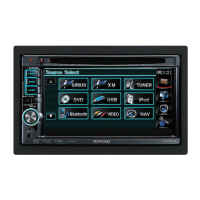
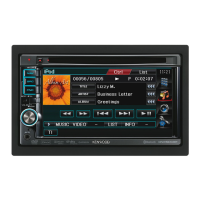
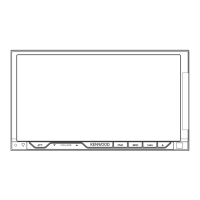
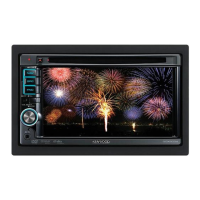
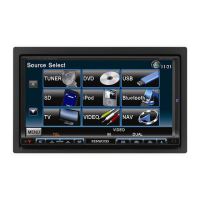





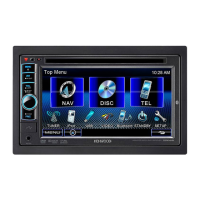
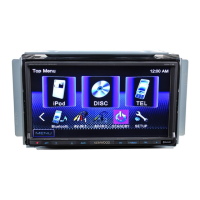
